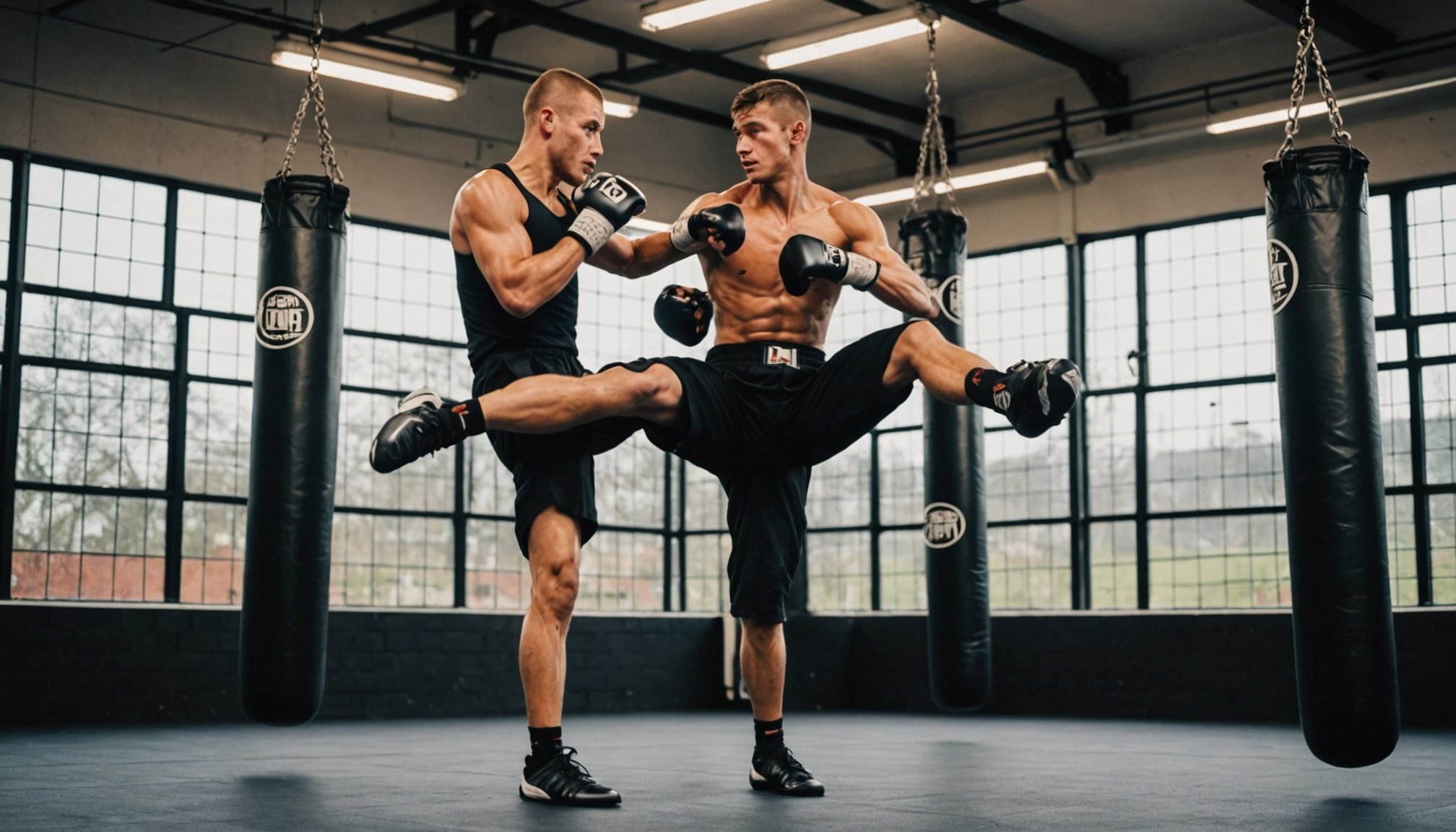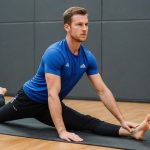Overview of the Roundhouse Kick Technique
The roundhouse kick is a pivotal move in kickboxing, emphasising both agility and strength. To execute this kick correctly, understanding the mechanics is crucial. The kick begins with pivoting on the supporting foot, which anchors the body and maximises balance. As the hip rotates, the lead leg swings in a wide arc, striking the target with the shin or the instep. This fluid motion harnesses centrifugal force, enhancing the kick’s power and impact.
In kickboxing, the roundhouse kick is not merely a striking move but a fundamental technique that defines a fighter’s skill level. Its versatility—suitable for targeting different body parts such as the ribs or head—adds to its significance. Mastery of this kick can dictate the flow of a match, providing fighters with both offensive and defensive options.
In parallel : Maximizing Performance: UK Sumo Wrestlers” Guide to Effective Weight Training Techniques
When applied in competition and sparring, the roundhouse kick showcases its strategic value. It can surprise opponents with speed and precision. Proper timing and distance management enhance its effectiveness, allowing kickboxers to maintain control and exert pressure in the ring. Thus, practising this kick is essential for anyone seeking to excel in kickboxing technique.
Essential Warm-up and Mobility Exercises
Before embarking on any physical training, warm-up routines are crucial. They prepare your body for the demands of exercise, reducing the risk of injury. By gradually increasing your heart rate and loosening your muscles, you can improve performance and avoid strains.
Also to read : Top Agility Ladder Drills to Elevate Performance for MMA Fighters in the UK
Importance of Warming Up
Engaging in proper warm-up routines is vital to activating your muscles. It also enhances circulation and primes your joints. More than just physical preparation, these routines mentally prepare you for the workout ahead.
Specific Exercises for Hip and Leg Mobility
To boost mobility in your hips and legs, consider incorporating mobility drills like hip circles and leg swings into your regimen. These exercises increase joint range and flexibility, crucial for movements requiring extensive hip and leg action.
Recommended Stretching Routines for Flexibility
Flexibility training is an essential part of any exercise program. Static stretches, like seated forward bends and calf stretches, improve muscle elasticity and joint flexibility. Dynamic stretches, such as lunges with a twist, further enhance this flexibility, preparing your body for more intense activity. Employ these stretching routines regularly for optimal results.
Footwork Techniques for Effective Roundhouse Kicking
Success in executing a powerful roundhouse kick hinges on kickboxing footwork. The optimal stance begins with one foot slightly ahead, ensuring stability and balance. For maximum impact, the supporting foot pivots, aligning the hips towards the target—this positioning boosts power and precision.
To enhance kick delivery, certain footwork patterns are vital. First, the shuffle step moves you swiftly towards or away from your opponent, crucial for creating distance or closing in. The L-pattern, meanwhile, steps to the side, offering superior angle control and maintaining an aggressive stance for the roundhouse.
Integrating agility drills into your routine can significantly refine your balance and foot positioning. One such drill is the ladder drill, which fosters dexterity and speed, making transitioning between movements seamless. Balance boards are another excellent tool to stabilize your stance, challenging leg muscles and improving equilibrium in real-time kicks.
Together, these practices ensure your footwork’s efficacy, making each kick formidable. Focused training can boost confidence, allowing you to respond efficiently to various combat scenarios. Always remember, controlled footwork and strategic positioning are the backbone of effective kickboxing techniques.
Step-by-Step Training Drills for Mastering the Roundhouse Kick
To perfect the roundhouse kick, follow a structured approach with training drills designed for skill progression. Begin with foundational drills to establish basic form and technique. For beginners, focus on balance and flexibility exercises, such as leg swings and stretching routines. These are essential for preparing your body for effective kick practice.
As you progress, incorporate partner drills to refine timing and accuracy. One partner holds a pad at various heights while you practice targeting the kick accurately. This drill enhances your ability to adjust your kick’s trajectory and speed. Partner feedback will help you fine-tune your technique, ensuring precise and powerful execution.
Solo drills are equally important for mastering the roundhouse kick. Practising against a heavy bag can significantly improve power and technique. Focus on the proper pivoting of the support foot, which is crucial for generating maximum impact. Mirror drills, where you observe your movements, aid in correcting posture and alignment during kick practice.
- Beginner Drills: Focus on flexibility and balance.
- Partner Drills: Enhance timing and accuracy with feedback.
- Solo Drills: Improve power and technique through repetition.
By following this systematic approach, your kick practice will evolve from basic skill sets to advanced mastery.
Common Mistakes to Avoid in Roundhouse Kicking
Mastering the perfect roundhouse kick in kickboxing hinges on avoiding training mistakes. Many beginners mistakenly execute the kick with incorrect posture. This includes improperly pivoting the supporting foot, which is crucial for achieving maximum rotation and power. A common kickboxing technique error is neglecting to engage the hips, thereby reducing the efficacy and fluidity of the kick.
To enhance performance improvement, diligent practice and form correction are vital. To modify these errors, focus on proper foot positioning. Ensure the supporting foot pivots fully, allowing the hips to rotate with your kicking leg. This not only increases power but also minimizes injury risk.
Receiving input is essential. Incorporating feedback and video analysis into your sessions can significantly refine your technique. Recording your kicks provides an objective view of your form, helping identify subtle mistakes you might otherwise miss. Seeking professional input is also beneficial for pinpointing areas that require improvement.
Remember, while the roundhouse kick is a powerful tool, its effectiveness is contingent on proper execution. Avoiding these common mistakes through consistent practice and external feedback can elevate your performance to new heights.
Incorporating Strength and Conditioning for Kickboxers
In kickboxing, integrating strength training with conditioning exercises is vital for boosting athletic performance. Strength training elevates a kickboxer’s ability to deliver powerful kicks through muscle development, resulting in increased kick power. A robust regime focusing on compound movements such as squats and deadlifts can significantly enhance lower body strength, translating directly to more powerful strikes.
Conditioning exercises are equally crucial, as they build the stamina needed to endure lengthy bouts. To maintain peak performance, kickboxers can incorporate aerobic activities such as running or cycling, alongside anaerobic drills like sprints or circuit training. These exercises improve cardiovascular health, ensuring a fighter remains energetic throughout a match or training session.
To understand and optimise their training efforts, kickboxers should track performance metrics such as muscular endurance, agility, and flexibility. Monitoring progress can help in adjusting training routines to focus on areas needing improvement and allow for a balanced development across all aspects of performance. Embracing a comprehensive strength and conditioning strategy lays the groundwork for any kickboxer’s success, making them more formidable in both practice and competition.
Expert Insights and Tips from Kickboxing Coaches
Gaining insights from seasoned UK kickboxing coaches can transform your approach to the sport. These experts offer invaluable coaching tips, rooted in years of experience and practical application. One prominent piece of expert advice revolves around the personalization of training strategies. Recognizing that each practitioner is unique, experienced coaches advocate tailoring sessions to individual strengths and weaknesses.
In interviews, UK kickboxing coaches emphasize the importance of regularly updating training strategies to prevent stagnation. Recommendations suggest integrating varied workouts, ensuring that the body remains challenged and adaptable. This not only enhances physical prowess but also keeps the mental engagement high.
For ongoing skill development, coaches propose a consistent evaluation of progress. This involves setting achievable milestones and reassessing them periodically. Practitioners are also encouraged to seek feedback and adapt to evolving dynamics within the sport. Regular consultation with a mentor ensures that training strategies are aligned with personal growth and evolving goals.
Moreover, keeping abreast of the latest trends and techniques can provide a competitive edge. By continually evolving and seeking out expert advice, athletes can maintain a robust and dynamic training regime, ensuring sustained improvement in their kickboxing journey.
Local Resources and Kickboxing Gyms in the UK
Discovering top-tier kickboxing gyms in the UK can significantly enhance your training experience. Throughout the country, these gyms offer a variety of training resources designed to meet the needs of beginners and seasoned fighters alike. From local classes to comprehensive workshops, enthusiasts can find numerous opportunities to hone their skills.
Renowned Kickboxing Gyms
Across the UK, certain gyms stand out for their exceptional coaching and facilities. Locations such as London, Manchester, and Birmingham boast establishments renowned for their expert trainers and state-of-the-art equipment. These gyms routinely offer beginner sessions, intensive workshops, and competitive training programs.
Online and Community Resources
Beyond physical gyms, digital platforms enhance a kickboxer’s journey. Many kickboxing communities online offer valuable video tutorials, forums, and training schedules, complementing in-person sessions. Online resources provide flexibility for those unable to attend local classes regularly, allowing enthusiasts to stay connected with the kickboxing community across the UK.
In essence, combining the strengths of both local kickboxing gyms and online resources can create a robust and flexible path for improvement. Whether you’re dedicated to mastering the sport or simply keen to stay fit, the UK’s kickboxing landscape has much to offer.











